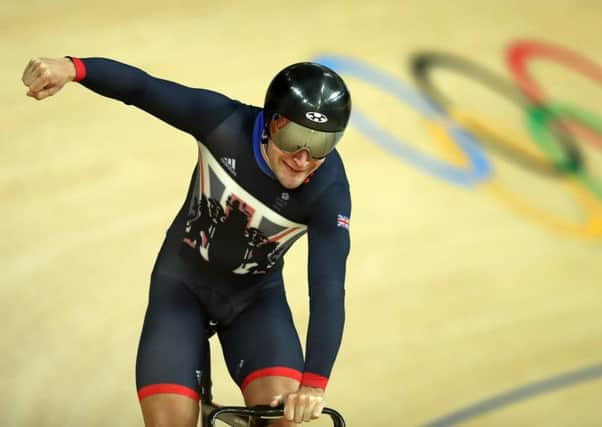Callum Skinner: I want to prove to people my asthma is real


These were documents approving my use of otherwise banned drugs on two occasions: a five-day course of prednisolone in November 2014 and a two-day prescription for salbutamol in January this year.
I was more worried about the World Anti-Doping Agency’s system being hacked than about the release of my TUEs. Each of us updates the Anti-Doping Administration & Management System on a regular basis, adding a lot of detailed information – not least about where we’ll be on a daily basis.
Advertisement
Hide AdAdvertisement
Hide AdWhen I went on Twitter and saw a headline with my name and stories with my picture I knew that people would be sceptical and think my TUEs could be questionable. And to be honest, I sympathise. I imagine myself a few years ago, as a cycling fan. I would have read the headline, not bothered opening the article, and moved on, putting two and two together and concluding that it all sounded a bit dodgy.
After the leak I resolved to release my NHS medical records, so I’ve spent the past week phoning doctors I’ve seen and the hospitals to which I have been admitted on four occasions having suffered asthma attacks. I was keen to make my records public for two reasons: to prove that my condition is real, but also to show that asthma need not stop somebody competing at the highest level.
Mum says that she was first aware of my asthma when I was five and my first medical report, from Yorkhill, confirms this: “Age 5 years had his first wheezy attack when on holiday in a house with a cat.”
It was one reason why I was never big on PE at school. I tended to hang out with other asthmatic kids because, at play time, we couldn’t run around like the others could. My mum encouraged me to try sport – rugby, kayaking and fencing with clubs rather than at school– though she was always worried that my inhaler would run out.
On four occasions I had an asthma attack so severe that I was admitted to hospital, the first time while on holiday in Canterbury when I was nine. After the cat incident, dogs were thought to be to blame for a couple of my asthma attacks. But the most serious was when I was 12 and I spent two days in hospital with pneumonia.
I started cycling when I was 12. The story of me being inspired by Chris Hoy is true, but I also wonder whether I was attracted to the sprint events because these seemed easier for an asthmatic. You go and do your effort then come off the track and, if your chest is tight, use your inhaler before you go again.
As I got more serious about cycling I also got serious about trying to manage my asthma. I’ve had consultations with Professor Ashley Woodcock, one of the UK’s leading respiratory experts, and try to rely less, rather than more, on medication. I’ve done a lot of work with our nutritionist and I’m religious about taking omega pills and pre- and probiotics.
There’s a running joke in the team that I use fake tan, but it’s natural, because I try to spend as much time in the sun as possible to top up my Vitamin D. I have an air purifier, which helps with air quality and monitors humidity and temperature, and I take it with me everywhere. We also have a daily health monitoring system: an app on our phone to track fatigue and spot signs of illness. It’s monitored daily by the physiologist and the doctor. And I try to avoid cats and dogs.
Advertisement
Hide AdAdvertisement
Hide AdNot so long ago my training would be compromised for up to three months of the year. Now it’s typically two to three weeks. This has been one of the keys to my more recent success; that, and learning how to react to health issues.
A classic example is my first TUE, which I applied for before the London World Cup in December 2014. We were seventh in the team sprint and my lap was 18th fastest – one of my worst-ever performances. I should have been tucked up in bed, but my desire to compete outweighed common sense.
The following year, 2015, I was ill again – any illness goes straight to my chest, which Prof Woodcock attributes to the pneumonia leaving scars in my lungs – but this time, instead of applying for a TUE, I pulled out of competition. It meant missing the European championships and a World Cup, which was a big call. But, in the long run, it paid off.
Sometimes TUEs are necessary – I had my second in January after falling ill, with a two-day treatment of salbutamol clearing up the problem and causing minimum disruption to my training. I’m not claiming the TUE system is perfect. One athlete using the system for performance enhancement rather than for genuine health reasons is one too many. But personally, I have no issue with all my TUEs, and drug test results, being made public. If you have nothing to hide, you have nothing to fear.